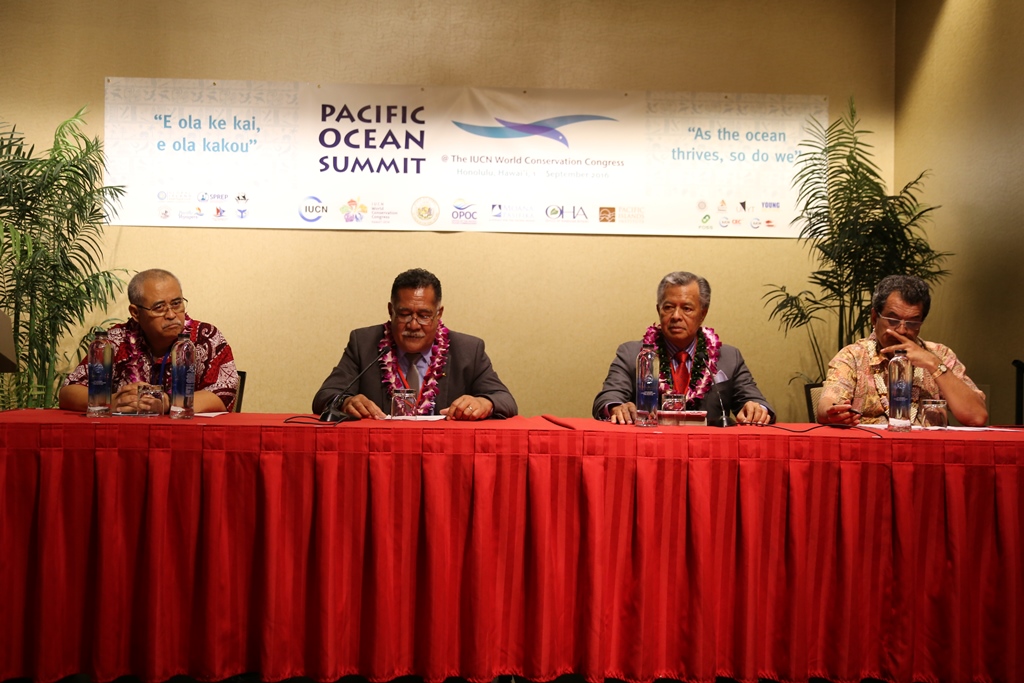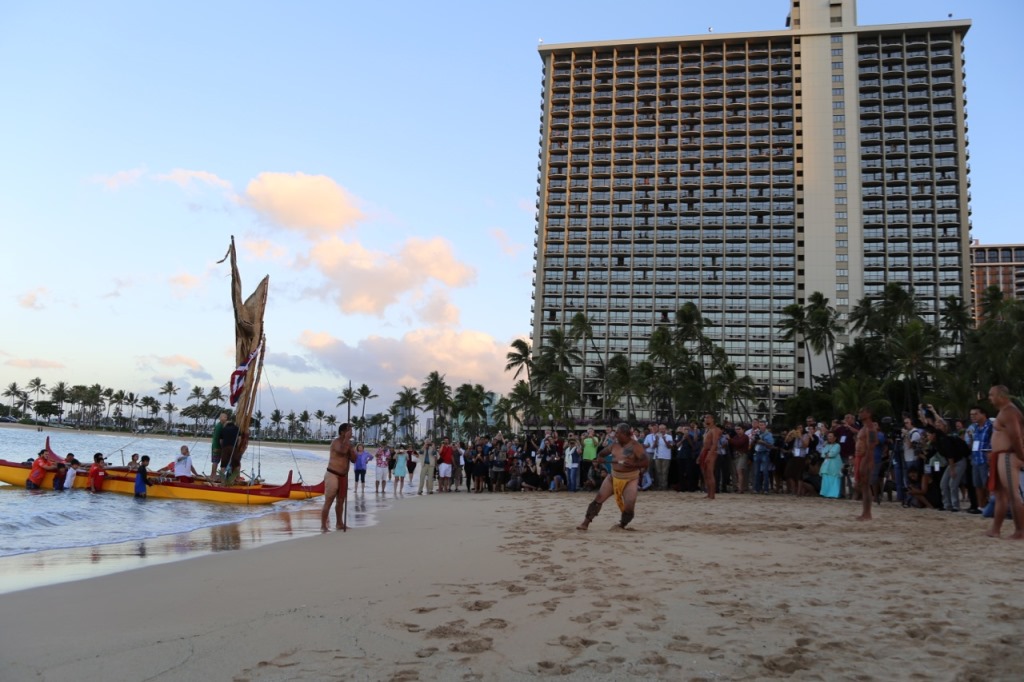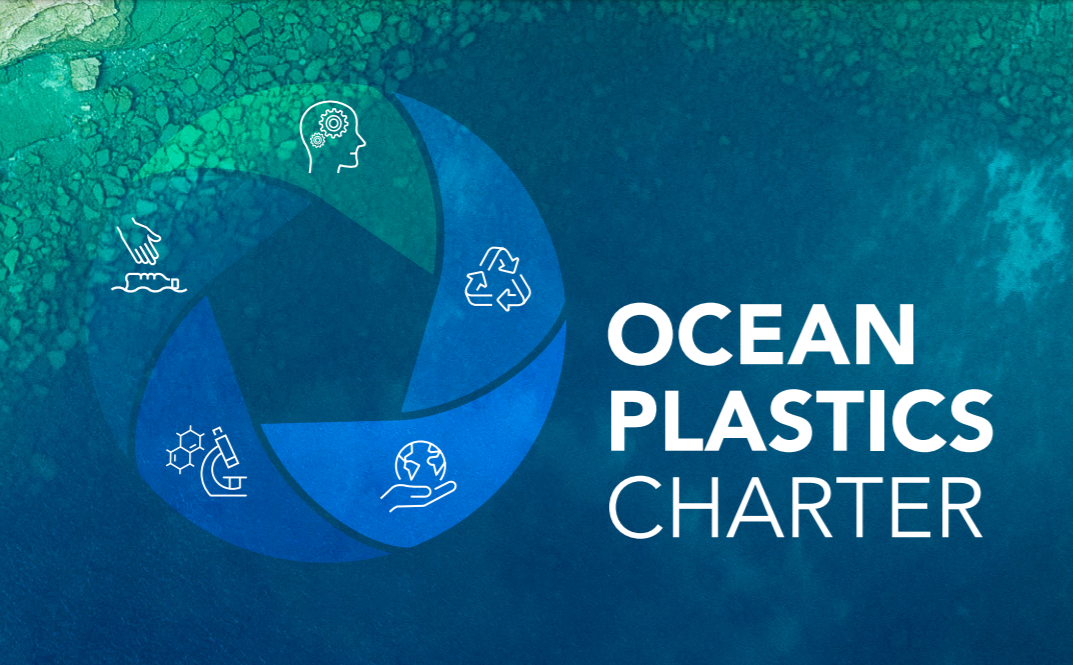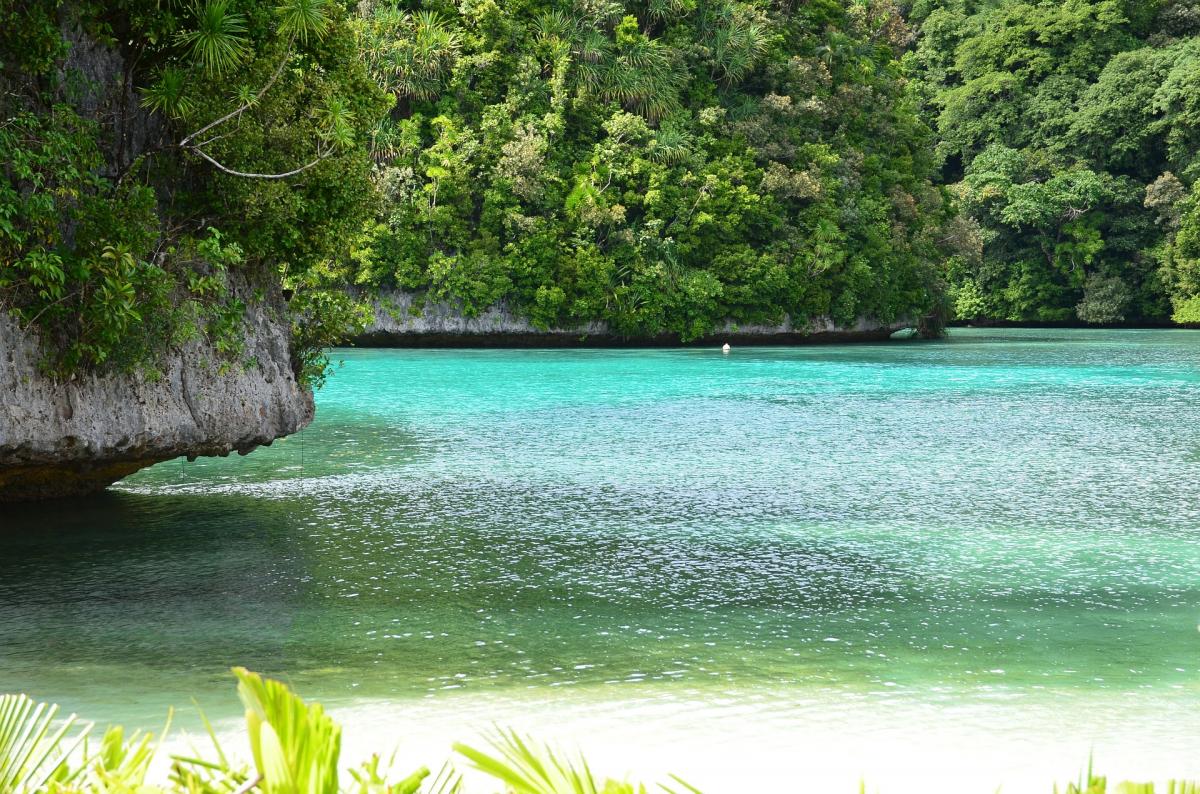Outcomes from Pacific Ocean Summit and IUCN World Conservation congress
Pacific Islands continue leadership on Oceans, call on Pacific Rim leaders to join a 2030 Pacific Ocean Partnership.
The ‘Hawaii Commitments’ from IUCN World Conservation Congress put action on Oceans front and centre.
The leadership of the Pacific Islands was in the global spotlight during the IUCN World Conservation Congress, held in Hawaii from September 1 to September 10. Sometimes called the “Olympics of conservation”, the Congress brought together over ten thousand leaders and decision-makers from government, civil society, indigenous peoples, business and academia.
The importance of the actions being taken by the Pacific Islands for a sustainable Pacific Ocean was showcased throughout the Congress, including at:
- The Vaka (traditional canoe) arrival ceremony on Waikiki Beach at dawn on September 1st, marking the beginning of the Congress, and where Pacific Island Heads of State were welcomed by Hawaiian government, community and indigenous leaders.
- The Pacific Ocean Summit, where Pacific Island leaders gathered to announce and discuss their countries commitments on ocean conservation and management, and to pledge their support to the 2030 Pacific Ocean Partnership.
- During the large number of Pacific Island presentations and workshops held at the Hawaii Pacific Pavilion and at other pavilions.
- Culminating in the Congresses’ Hawaii Commitments theme of “Navigating Island Earth”, and its highlighting of the ocean’s importance for biodiversity conservation and sustainable livelihoods as one of the critical issues for conservation.
2030 PACIFIC OCEAN PARTNERSHIP
Pacific Island leaders gathered in Hawaii at the Pacific Ocean Summit on September 1 to declare an ambitious 2030 Pacific Ocean Partnership to foster meaningful collaboration between government, private sector, civil society and indigenous peoples to save the world’s largest ocean.
The Pacific Ocean Summit, with the theme of “E ola ke kai, e ola kakou — As the ocean thrives, so do we”, had over 250 participants from 23 countries around the Pacific Rim including Heads of State, Senators, Governors and Mayors, private sector and indigenous leaders who pledged their support to assist in creating change.
“Our role in the protection of the ocean is no mean task. It’s a major contribution to the wellbeing of humanity. This is the Pacific challenge we face,” said Henry Puna, Prime Minister of Cook Islands. “I am pleased that we, the Pacific states, have already answered this challenge. I am now looking at the rest of the world to join us.”
Pacific leaders from Micronesia, Melanesia, and Polynesia announced a range of commitments at the summit, including French Polynesia President Edouard Fritch’s commitment to officially listing French Polynesia as the largest marine managed area in the world before 2020, and Marshall Islands President Hilda Heine’s initiative to develop a regional hub for sustainable shipping.
David Ige, Governor of Hawai’i and co-chair of the Summit, committed Hawai’i to working with the Pacific Island Countries “It is truly remarkable how connected we all are and I thank the leaders of the Pacific for giving a voice to our Ocean. Climate Change is a challenge for the world, but our challenge today is getting people to realise that we must take care of our earth.”
The Deputy Prime Minister Siaosi Sovaleni reiterated the Kingdom of Tonga’s commitment to achieving 30% marine protected areas and 20% terrestrial protected areas.
Dr. Colin Tukuitonga, Director-General, Pacific Community (SPC) noted that “our region is the most fossil fuel dependent region in the world, importing around 1billion dollars’ worth of fuel annually, a quarter of which is purely used to generate electricity and the rest on transport, most of which is on sea transport. Think of the possibility of what we can achieve by allocating and spending that billion dollars on renewable energy.”
Erik Solheim, the Executive Director of the United Nations Environment Programme, noted that “the voice of the Pacific is strong” and offered the partnership of UNEP to the Pacific Islands.
Dr. Kamana’opono Crabbe, the CEO of the Office of Hawaiian Affairs, highlighted the absolute importance of the integral connection between indigenous people and the ocean in achieving conversation outcomes, and committed to hosting indigenous leaders to discuss a Pacific people’s network.
The President of IUCN, Zhang Xinsheng, applauded the commitments and leadership of the Pacific Island leaders, noting they are “leaders of the world’s Largest Ocean States”, and supported the call for the 2030 Pacific Ocean Partnership to meet every three years until 2030, and pledged the ongoing support of IUCN to the Pacific Islands.
Co-chair of the summit, the President of the Federated States of Micronesia, Peter M. Christian, acknowledged IUCN Oceania, the Office of the Pacific Ocean Commissioner and the Voyaging Societies for their great initiative in convening the summit, and reminded participants that the region’s collaborative efforts must “gel together into meaningful actions”.
In his closing remarks, Ratu Inoke Kubuabola, Foreign Minister of the Republic of Fiji, also reinforced the need for the region to work together in partnership, and noted the pathway from the Paris Agreement to the Pacific Ocean Summit and on to the UN Ocean Conference in 2017 being hosted by Fiji and Sweden.
“The Pacific Islands has today boldly shown what can be achieved when leaders at all levels come together to solve common problems,” said Senator J. Kalani English, Senate Majority Leader for the State of Hawai’i. “The call is now for countries across the globe to join this fight, and each to do its part to save their oceans.”
To conclude the summit, a 2030 Pacific Ocean Partnership tapa cloth was signed by the leaders and participants, providing a strong statement of support for a coalition of the willing on ocean action to enhance, amplify and promote the efforts of countries, states, provinces, cities, corporations, communities and other stakeholders from around the Pacific Rim.
The next steps planned for the 2030 Pacific Ocean Partnership include:
- Development of Partnership entry criteria based on commitments to action, to be held in conjunction with preparatory meetings in Fiji in early 2017 for the UN Oceans Conference.
- Formal launch of the Partnership at the UN Oceans Conference in New York in June 2017.
- Promotion of the Partnership at the inaugural Oceans Pavilion at the 57th International Venice Biennale, the oldest, largest and best-attended visual art festival in the world.
HAWAI`I COMMITMENTS
The calls for global action on Oceans from Pacific Island leaders, highlighted at the Pacific Ocean Summit, were brought to the heart of the path forward from the IUCN World Conservation Congress, with the Congresses’ Hawaii Commitments themed as “Navigate Island Earth”.
The significance of the ocean for biodiversity conservation and sustainable livelihoods, and the need for a combination of traditional wisdom and modern knowledge, were highlighted in the Hawaii Commitments as two of the three critical issues for conservation in the coming decades.
The Hawaii Commitments identify a number of challenges, opportunities and solutions, and concludes by noting:
Our problems are complex, values are contested, and the future uncertain. Strong partnerships are needed to implement conservation at the scales required. We need to broaden and deepen the global dialogue about how we relate to nature, motivate collective action, and ensure that nature-based solutions are fair, just and enduring. The conservation community will meet these challenges emboldened by the creativity of human imagination, empowered by scientific and traditional knowledge, and inspired by the spirit of Aloha ʻĀina.
The full document can be viewed here: https://portals.iucn.org/congress/hawaii-commitments





